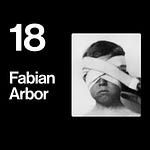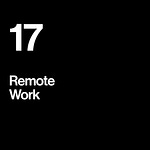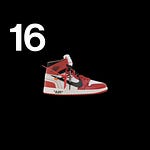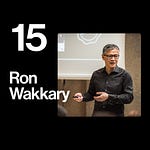Supported by:
Daylight Computer: the healthiest computer
Baked Graphics: amazing 3D video mockups
Framer: the best website builder for designers
ProtoPie: the best hi-fidelity interface prototyping tool
I didn't know much about design research when I began doing it nearly 10 years ago.
I began as a grad student, arriving as an engineer and web designer. I was able to build things. But I didn't fully understand the purpose of design research. I didn't know whom it creates value for, and what it should deliver. I didn't see the full spectrum of activities involved.
The problem was that the books I read and the people I worked with each stuck to one particular version of what "design research" means. In truth, it means different things to different people. Research done by a freelancer for a client's project is different from the research done for a thesis at the university.
Why bother?
It's useful to recognize the different faces of design research, for a few reasons.
First, as a designer or researcher, you may transition between different worlds – for example: graduating from university to a job, or working for a corporation after freelancing. Appreciating multiple perspectives lets you transfer your skills between the worlds.
Then, people who mean different things by "design research" may come together to work around the same table. I witnessed many of these interactions – corporate professionals, academic scholars, freelance artists, clients and sponsors talking to each other – where people say the same words, but mean different things. I have even seen (and took part in) quarrels that result from this. For communication and collaboration, you need the same meanings, not just the same words.
Finally, if you’re a scholar of design at any level – from student to professor – clarity on the very words that brand your field is a basic competence you must have. Strangely, this is not taught to everyone. Clarity on the different meanings of "design research" is a subject that comes up in advanced courses on design theory and philosophy. But in my career as a scholar, this clarity has been an unlock like no other. The mental model I explain in this article is one I use in every project I'm involved in, and it gives me a significant edge.
How to define "design research"?
What purpose does it serve? What deliverables and outcomes does it generate? What activities and competences does it deploy?
The answers depend on where and why it is done.
My work is academic research on human-computer interaction design, and my girlfriend is a design researcher at a car company. We have the same job title, but do entirely different work. I read books, hack on software, and write articles. She has meetings, talks to people who buy their cars, and produces technical documents.
Even within our university department I disagree with colleagues on what to invest in, what to teach, and what counts as good research.
Conquering this chaos requires asking the right questions. Instead of looking for a single "correct" definition, it's more productive to ask: What are different flavors of design research? What is a menu of options for what it could mean?
Put this way, the answer enables us to communicate and collaborate with anyone.
After a couple of years as a novice, struggling with conversations, papers, and assignments that didn't make sense, I achieved structure, confidence, and results when I finally understood this: there is a list of 3 options for what "design research" can mean.
These are introduced in an article titled Research in Art and Design, published in 1993 by Sir Christopher Frayling.1 He proposes three categories of design research:
Research for Design
Research into Design
Research through Design
In the original paper, he introduces these to the academic world. My take on them is based on Frayling's ideas, but re-framed to be useful for professionals as well as scholars.

Research for Design
Most design research outside academia, in commercial product development, is research for design.
In Frayling’s words, this is the "gathering of reference materials" that culminate in the form of a product. This is the knowledge-finding and analysis to be sure, based on evidence, that you are building the right thing. Interviews with users, benchmarking against competitors, and assembling moodboards can be research for design activities.
Some amount of research for design is a requirement in all design work. I'd go as far as to argue that if you are not doing any research for design, then you are not doing design – you're just making pictures or models.
The nuance is that the research and the tactical design may be done by different people. Frayling, writing in 1993 for an academic audience, pictures a designer who gathers material to guide her own execution. Today, in disciplines like UX design and service design, doing and articulating research is a major part of the job. Research for design, in both academia and business, can be an end in itself; to inform design work by others. This is how teams work on larger projects. Research must be done for de-risking products before they go to market.2 The product is large and complex, requiring different specializations – researchers can't work on it directly. Instead, their job is to communicate findings to others who build the product.
Warnings
Even though research is indispensable for design, it can be misunderstood and discounted in the context of business. Many designers and researchers struggle with managers who don't see its value. In truth, much of this can stem from errors made by researchers.
First, it is easy to lose sight of the product, when we turn to focus on research. Especially in academia, I witness many students and colleagues get lost in the rabbit hole of theory. They study, for instance, habits and opinions of people around certain designs; but their results can miss the mark on delivering insights to improve or create products. Their work may be valid and valuable, legitimate research. But not all research is design research. Research for design must aim to result in insights that inform product design directly.
Another error is to fixate on certain methods. Every researcher has (and should have) their favorite methods. My girlfriend's team does studies with people sitting in the actual car. Another friend, a business designer, runs workshops with lots of post-its. My students gravitate to interviews with potential users. But the time we spend on rigorous procedures might be better invested in subsequent design and communication. It's worth to consider "quick and dirty" methods: observing drivers from the roadside, calling up friends and family, looking for answers in books and papers... Over-investing in very careful research at the expense of crafting deliverables is suboptimal.
Finally, on the subject of crafting deliverables – the reporting of design research must itself be well-designed, deploying excellent writing, graphic design, videos, and other media as fit. How quickly its audience understands the work is a major indicator of effective design research.
Research for design means that there must be design taking place, which your are doing research for – if no-one designs anything based on your research, there is no point in doing it. Thus, the design researcher has obligations which may burden other disciplines less: relevance, efficiency, and clarity. Those who can deal with these obligations will find it easy to bridge the divide between scholarship and business. into Design is research about design, with the goal of learning about design and how it's done.

Research into Design
Research into design is research about design, with design and designers as its subject.
Much of research into design is academic, where scholars from different disciplines – psychology, anthropology, education, history... – turn their gaze to the process of design and creative work. Philosophical discourse can also fit in this category – Frayling's paper is a good example.
Many books and other educational materials for designers are based on research into design. The Design Discipline Bookstore offers many of these – like Jost Hochuli's Detail in Typography, Ellen Lupton's Thinking with Type, Timothy Samara's Making and Breaking the Grid, and Alina Wheeler's Designing Brand Identity – from authors who have done their homework. Many experts also review materials from their own practice for the same purpose – Josef Müller-Brockmann's Grid Systems in Graphic Design and Michael Bierut's How To are great examples.
Books from the business section, on innovation and creativity, may also qualify as research into design. Some of my favorites are The Art of Innovation, The Ten Faces of Innovation, and Creative Confidence by IDEO partner Tom Kelley. More recently I have enjoyed Kevin Ashton's How to Fly A Horse, an accessible study on the psychology and sociology of invention.
Companies that create tools for designers – think Figma, Adobe, or Webflow – also do research into design, to understand the audience for their products. This is a case where research for design and research into design become one.
Since research into design is defined by its subject, rather than its purpose, it's hard to give advice on how it should be done. Quick and dirty is appropriate if you're building products for designers with the latest technology. A scholar producing a book could prefer to take the time.

Research through Design
Research through design more of an academic concept – not because it's not done in commercial work, but because people call it by other names. In fact it is the crux of essential activities in modern product development, like user experience studies.
Research through design is to use design as a research method – as an approach for learning about things other than design, gaining access to knowledge that would have been impossible otherwise. In Frayling’s words:
It's taking a problem outside design, and using design to address it... Taking design as particular way of thinking, and particular approach to knowledge, which helps you understand certain things that exist outside design.
Trying to define research through design like this, in the abstract, sounds arcane. The reality is simpler. Frayling gives examples like materials research: experiments with fabrication methods to obtain different colors and shapes in metals. Or repurposing a photocopier to create new kinds of illustrations.

A modern example of research through design is user experience studies, where people engage with new inventions. Certain insights on new products are impossible to obtain without the having actual design at hand. Showing something to people, rather than just telling them about it, leads to more relevant feedback.
The same applies to the designer's experience. As our sketches and prototypes develop towards the final form, so does our grasp on the consequences of creative decisions. In my own research, I build systems with sensors and robotics that respond to the human body. Qualities of the user experience like timing, lag, and occasional errors are impossible to imagine without experiments with working prototypes. As Bill Moggridge put it: "The only way to experience an experience is to experience it."
Thus, research through design is popular in interaction design, UX, and human-computer interaction where we experiment with technology. It is home to exceedingly creative designer/scholars, and curious genres like design fiction and critical design.
My go-to resource for research through design is Design Research Through Practice. This book by a team of the foremost scholars on research through design was, like Frayling's paper, was a critical stepping stone for my graduation from student to professional scholar.
Warnings
In research for design, I suggested that being too methodical is an error. In research through design, the opposite is more common.
Many of us who take up design research as a profession are designers. We enjoy creative work. We find research through design exciting because here we can spend our time crafting designs, and have this work count as research. (If we take up another kind of design research – research for design or research into design – most of our day-to-day work would not be design.) But the fact that you are doing design does not mean that you are doing research through design. Just like it pays off to recognize the three faces of design research, research through design requires us to understand its sub-genres where different standards apply.
For those with a theoretical bent, the opposite is a common error: too much research and too little design. Research through design requires rigorous craft as well as scholarship.
Design Disciplin will return to the world of research through design in the future, to explore its branches, ideals, methods, and more.

Coming Full Circle
There are many situations that will not fit in these categories.
Modern product development is about rapid iteration – think user-centered, lean, and agile. Especially in tech and software, the product evolves constantly, melding research for and through design in perpetual cycles of inspiration, prototyping, and testing.
Many products exist to empower creativity. Companies like Figma and Adobe build tools for designers. Products like Canva and Squarespace let anyone make graphics and websites. Software like Gumroad, Notion, and Behance are essential for design businesses. People who develop these invest a lot of time learning about how designers work, building prototypes, and iterating to improve their product. Their work straddles all three categories.
Thus, my point is not that design research must adhere strictly to one of these genres to be "correct." On the contrary: such a narrow view on design research is unproductive. It pays off to recognize its many faces.
On the other extreme, it's hard to get anywhere if anything goes. We may not have a single set of standards for good design research, but we have different options. Pick the correct one, be clear on the purpose of what you're doing, and respect the standards that apply:
Are you doing research for design, where design is the purpose, and you must maintain focus on the product?
Are you doing research into design, where design is the subject, and you must get close to the work of design?
Are you doing research through design, where design is the method, and you're trying to learn about the world that surrounds your design?
Each of these three categories – as well as their intersections, extensions, and exceptions – are endless worlds in themselves. Design Disciplin will return to explore them.
Books, Products, Resources
Christopher Frayling speaking at the Research Through Design 2015 Conference
Creative Confidence by Tom Kelley and David Kelley
Design Research Through Practice by Ilpo Koskinen et al.
Designing Brand Identity by Alina Wheeler
Detail in Typography by Jost Hochuli
Grid Systems in Graphic Design by Josef Müller-Brockmann
How To by Michael Bierut
How to Fly A Horse by Kevin Ashton
Making and Breaking the Grid by Timothy Samara
Research in Art and Design by Christopher Frayling
The Art of Innovation by Tom Kelley and Jonathan Littman
The Ten Faces of Innovation by Tom Kelley and Jonathan Littman
Thinking with Type by Ellen Lupton
Frayling is a very interesting person. As a professor at the Royal College of Art in London, he has studied and written about many topics like film, literature, and history. He was knighted in 2001 for services to art and design education – a real-life hero of design education.
"De-risking go-to-market" was a phrase I heard from Andréa Mallard (currently CMO at Pinterest) in an interview for the High Resolution series, as she responds to the question of how to explain the role of design to other professionals.

















What does "design research" mean?